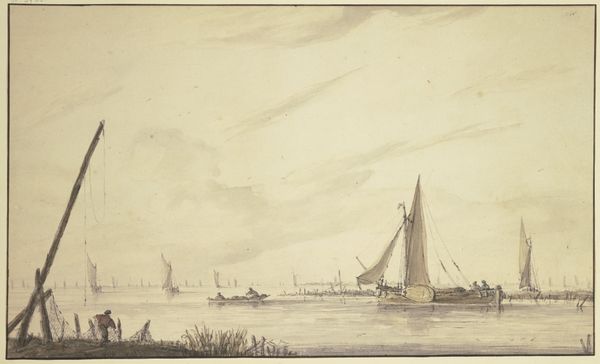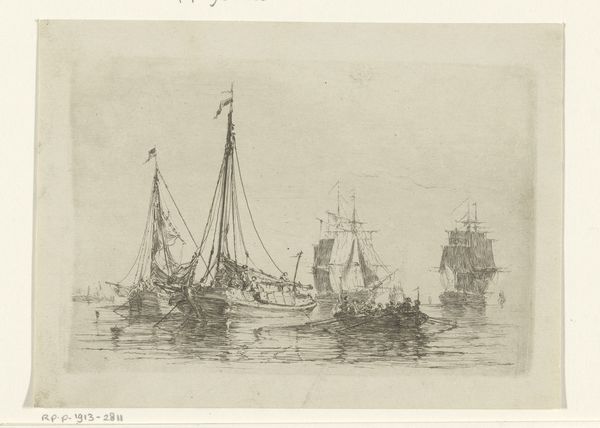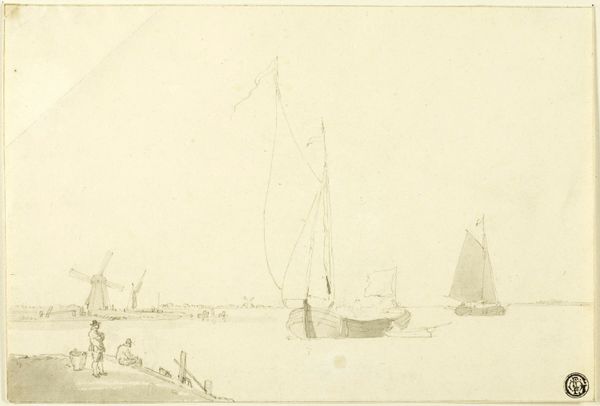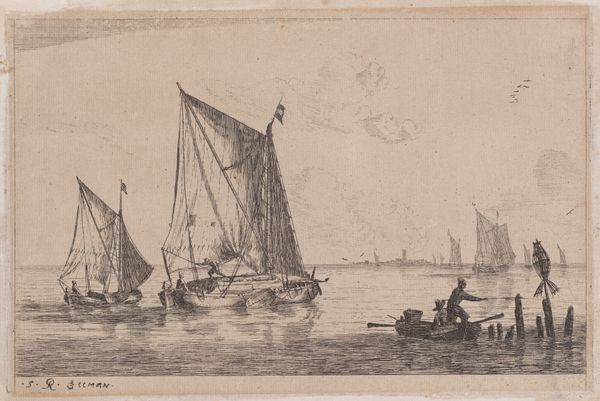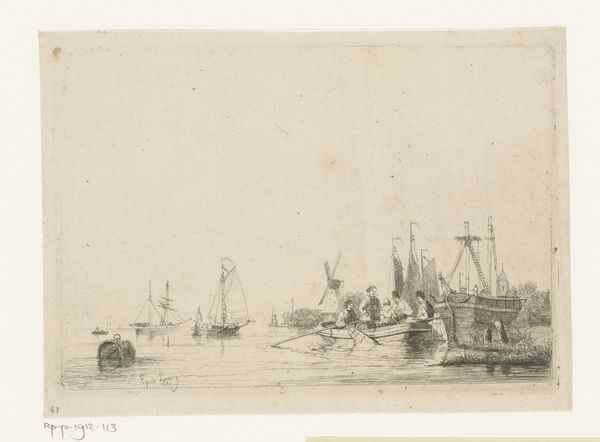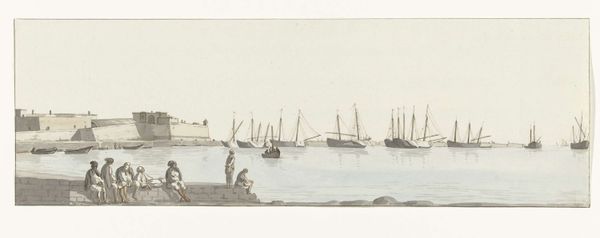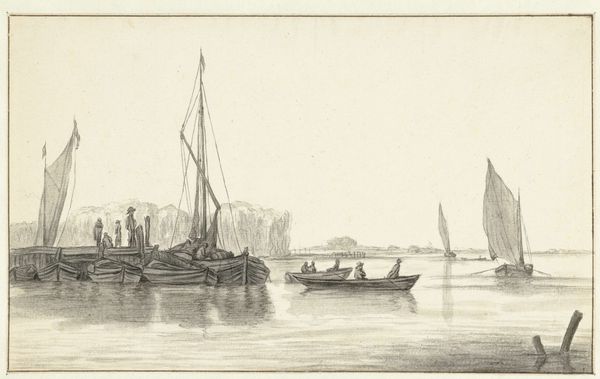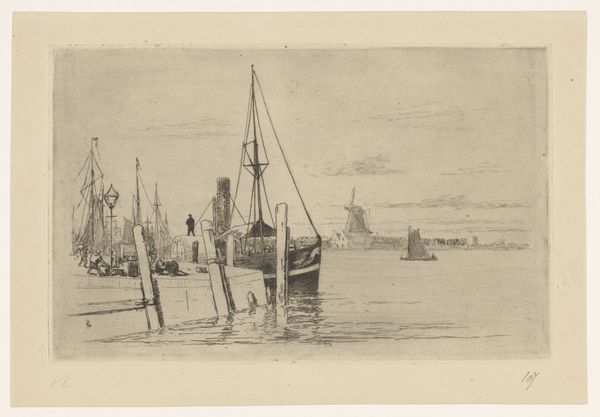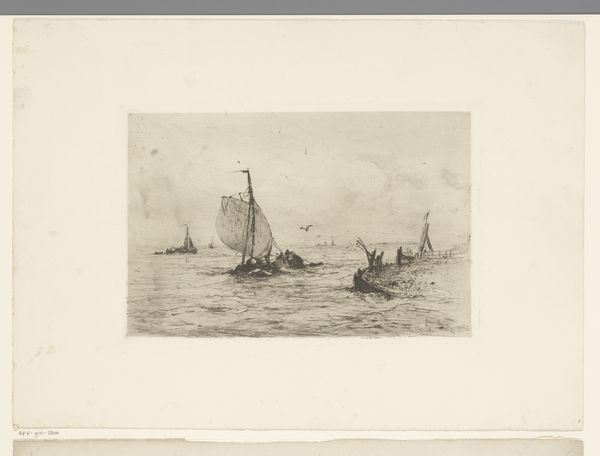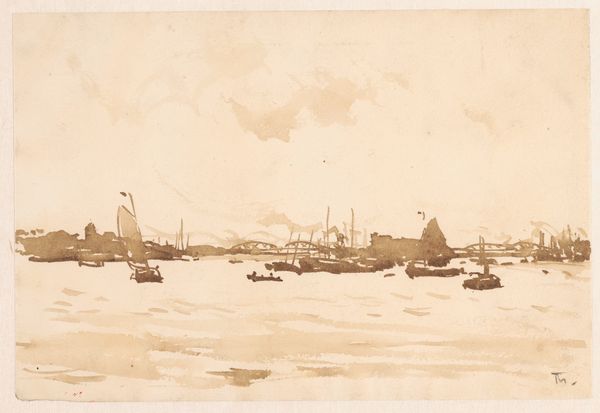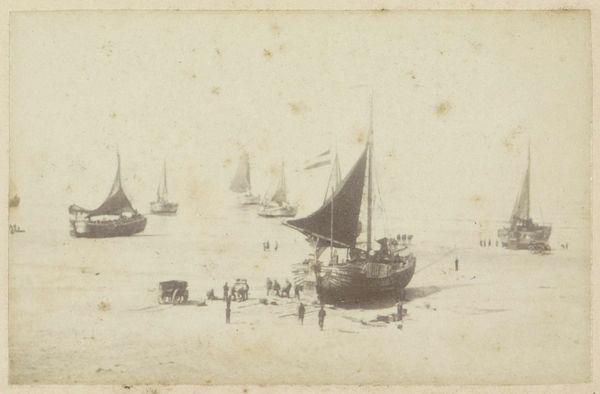
Gezicht op Golf van Napels vanaf kade bij kerk Santa Maria del Carmine 1778
0:00
0:00
drawing, pencil
#
drawing
#
neoclacissism
#
landscape
#
pencil
Dimensions: height 205 mm, width 377 mm
Copyright: Rijks Museum: Open Domain
Editor: This delicate drawing, "View of the Gulf of Naples from the Quay by the Church of Santa Maria del Carmine," was created by Louis Ducros in 1778 using pencil. It strikes me as incredibly serene, almost dreamlike, with its muted tones and focus on the vastness of the water. What significance do you see in the recurring symbols or imagery? Curator: What captures me immediately is the potent symbol of travel and transition offered by these boats crossing the liminal space between land and water. Note the repetition – a conscious choice that directs us toward a narrative about leaving or arriving, perhaps longing for connection and new beginnings or safe harbors. It reminds us how ports often symbolize cultural exchange, of stories brought from other lands. Editor: That's interesting, I hadn't considered that perspective. Is the symbolism limited to the boats themselves? Curator: Not at all. Consider the church in the title and rendered in the work. Churches often represent established belief systems, safety, community... notice where Ducros chooses to place it - right at the skyline between earth and heaven. Consider, too, the visual balance struck by Ducros: he uses boats to foreground our earthly existence and uses architecture and nature to gesture toward spirituality. Do you notice anything particularly intriguing about *how* they're rendered, or even how many figures inhabit the boats? Editor: I see that one boat carries more figures than the others... and the way that buildings seem to melt slightly into the sky - very ephemeral, but definitely rooted in classical architectural forms. Thank you, I'm starting to see how different symbols play off each other and hint at something bigger. Curator: It’s a potent dance between the temporary, captured by the travelers, and the enduring, hinted at by architecture that recalls other ancient and influential cityscapes. These buildings whisper across centuries, across civilizations and religions... Editor: It really makes me consider what 'home' truly represents across time, doesn't it? Thanks, I will consider it.
Comments
No comments
Be the first to comment and join the conversation on the ultimate creative platform.
